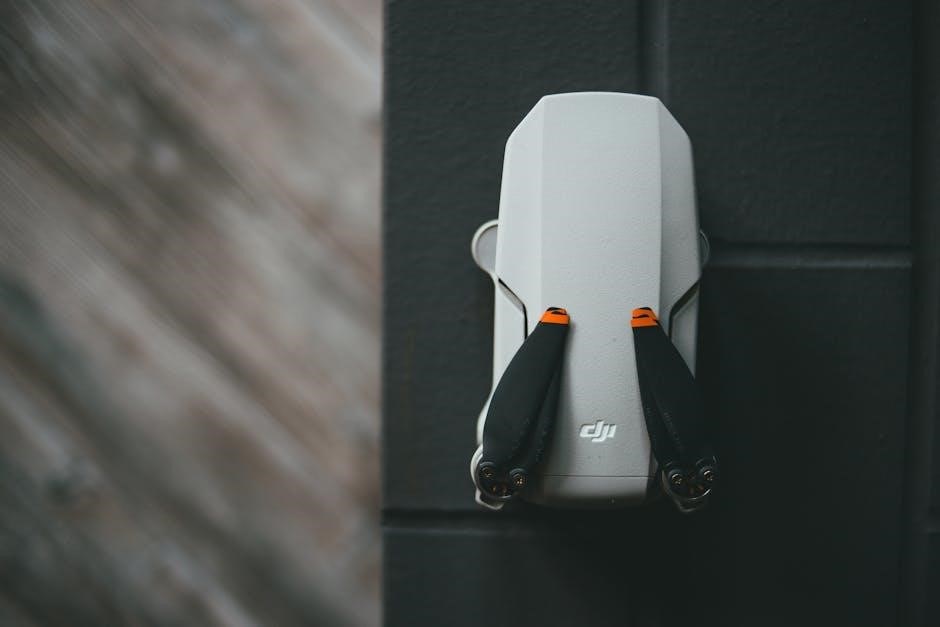
The introduction to fly rod guide size chart provides essential information on selecting suitable guides for optimal performance‚ utilizing
key factors
to determine the correct size and spacing for a fly rod‚ ensuring better line flow and response always matters․
Importance of Guide Size
The importance of guide size in a fly rod guide size chart is crucial for optimal performance․ Using fewer sizes results in better line flow and quicker rod response․ The guide size affects the overall weight of the rod‚ with smaller sizes resulting in less weight․ A well-designed guide size chart takes into account the curve of the rod under load‚ which differs between manufacturers․ The goal is to achieve a uniform spacing that allows for smooth line flow and minimal friction․ By selecting the correct guide size‚ anglers can improve their casting accuracy and distance․ Additionally‚ the right guide size can reduce line tangles and wear on the rod․ A good guide size chart provides a balanced setup‚ enabling anglers to focus on their technique and enjoy their fishing experience․ Proper guide sizing is essential for both beginners and experienced anglers‚ as it directly impacts the rod’s performance and overall fishing success․ Guide size is a critical factor in fly rod design and selection․
History of Fly Rod Guide Sizing
The history of fly rod guide sizing dates back to the early days of fly fishing‚ with rod makers experimenting with different guide sizes and spacings to improve performance․ Over time‚ various techniques and materials were developed‚ leading to the creation of standardized guide size charts․ In the past‚ guide sizing was often a trial-and-error process‚ with rod makers relying on experience and intuition to determine the optimal guide size․ However‚ with the advancement of technology and materials‚ guide sizing has become more precise and scientific․ Today‚ guide size charts are based on extensive research and testing‚ taking into account factors such as rod action‚ line weight‚ and fishing style․ The evolution of guide sizing has played a significant role in the development of modern fly rods‚ enabling anglers to cast more accurately and efficiently․ By understanding the history of guide sizing‚ anglers can appreciate the complexity and nuance involved in creating a high-performance fly rod․ The history of guide sizing is a fascinating story that highlights the innovation and craftsmanship of rod makers․ Guide sizing has come a long way‚ and its history continues to influence the design of modern fly rods․

Understanding Fly Rod Guide Spacing
Proper guide spacing is crucial for optimal fly rod performance‚ using
specific techniques
to achieve uniform line flow and minimal friction always matters every time with fly rods and guides․
Factors Affecting Guide Spacing
Several factors affect guide spacing‚ including the type of fishing‚ rod length‚ and line weight․ The material and construction of the rod also play a significant role in determining the optimal guide spacing․ For example‚ faster action rods require more precise guide spacing to achieve the desired performance․ Additionally‚ the size and type of guides used can impact the spacing‚ with larger guides requiring more space between them․ The location of the guides on the rod‚ such as near the tip or towards the handle‚ also affects the spacing․ Furthermore‚ the type of line and leader used can influence the guide spacing‚ with thicker lines requiring more space between guides․ By considering these factors‚ anglers can optimize their guide spacing for improved casting performance and reduced line wear․
Types of Guide Spacing Charts
There are various types of guide spacing charts available‚ each designed to cater to specific fishing needs and rod configurations․ The most common types include progressive‚ uniform‚ and tapered guide spacing charts․ Progressive charts feature guides that are spaced closer together near the tip of the rod‚ while uniform charts have evenly spaced guides along the entire length․ Tapered charts‚ on the other hand‚ feature guides that are spaced closer together near the handle and farther apart near the tip․ Some charts also take into account the type of line and leader used‚ as well as the fishing technique․ These charts can be found online or in fishing guides and are often specific to certain rod manufacturers or models․ By using the correct guide spacing chart‚ anglers can ensure optimal performance and casting accuracy․ Guide spacing charts are essential tools for anglers looking to customize their rods for specific fishing applications․

Guide Specifications for Fly Rods
Guide specifications for fly rods include measurements and sizes‚ utilizing standard guide sizing to ensure optimal rod performance always matters with correct guide sizes․

Standard Guide Sizes
Standard guide sizes are crucial in determining the optimal performance of a fly rod‚ with measurements typically ranging from 2/0 to 1‚ and wire loop sizes varying from 0․022 to 0․030 inches in diameter․
The standard guide sizes are usually organized in a table or chart‚ making it easier for rod builders to select the correct guide size for their specific rod․
A standard guide size chart typically includes the guide size‚ wire loop size‚ and the corresponding diameter in millimeters‚ allowing for precise selection and placement of guides on the rod․
Using standard guide sizes ensures consistency and accuracy in rod building‚ resulting in better line flow and quicker rod response․
Guide size selection is critical‚ as it affects the overall weight and performance of the rod‚ with smaller guide sizes resulting in less overall weight․
Standard guide sizes provide a reliable reference point for rod builders‚ enabling them to create high-quality rods that meet specific performance requirements․
The use of standard guide sizes also facilitates the comparison and selection of guides from different manufacturers‚ making it easier to find the right guides for a particular rod-building project․
By following standard guide sizes‚ rod builders can ensure that their rods are properly balanced and optimized for optimal performance․
Standard guide sizes are an essential aspect of fly rod building‚ and their proper selection is critical to achieving the desired performance and functionality of the rod․
The standard guide size chart serves as a valuable resource for rod builders‚ providing them with the necessary information to make informed decisions about guide selection and placement․
Overall‚ standard guide sizes play a vital role in the construction of high-quality fly rods‚ and their importance should not be overlooked․
Universal Guides Specs and Sizing Chart
A universal guides specs and sizing chart provides a comprehensive guide for selecting the correct guide size and spacing for a fly rod‚ taking into account various factors such as rod length and action․
The chart typically includes a range of guide sizes‚ from small to large‚ and corresponds to specific wire loop sizes and diameters‚ making it easier to choose the right guides for a particular rod․
A universal guides specs and sizing chart is usually organized in a table format‚ allowing for quick and easy reference‚ and includes measurements in both inches and millimeters for added convenience․
The chart serves as a valuable resource for rod builders‚ enabling them to select the optimal guide size and spacing for their specific rod‚ and ensuring consistent and accurate results․
By using a universal guides specs and sizing chart‚ rod builders can streamline the guide selection process‚ saving time and effort‚ and focus on other critical aspects of rod building․
The chart is an essential tool for achieving optimal guide placement and size‚ and is designed to be used in conjunction with other rod building resources and techniques․
With a universal guides specs and sizing chart‚ rod builders can create high-quality rods that meet specific performance requirements‚ and ensure a superior fishing experience․
The chart is a critical component of the rod building process‚ and its importance should not be overlooked․
Overall‚ a universal guides specs and sizing chart is a valuable resource for rod builders‚ providing them with the necessary information to make informed decisions about guide selection and placement․

Customizing Fly Rod Guides
Epic Fly Rod Guide Spacing Charts
Epic fly rod guide spacing charts are designed to provide anglers with a comprehensive guide to optimizing their fly rod’s performance‚ taking into account various factors such as rod length‚ action‚ and line weight․ These charts offer a detailed breakdown of the ideal guide spacing for different types of fly rods‚ allowing anglers to customize their setup for specific fishing techniques and conditions․ By utilizing epic fly rod guide spacing charts‚ anglers can improve their casting accuracy‚ reduce line tangles‚ and enhance overall fishing experience․ The charts are typically organized by rod length and action‚ making it easy for anglers to find the optimal guide spacing for their specific fly rod․ With the help of these charts‚ anglers can take their fishing game to the next level‚ catching more fish and enjoying a more rewarding experience on the water․ Epic fly rod guide spacing charts are a valuable resource for any angler looking to optimize their fly rod’s performance․
DIY Fly Rod Guide Sizing and Spacing
For anglers who prefer a hands-on approach‚ DIY fly rod guide sizing and spacing can be a rewarding experience․ By taking the time to research and understand the principles of guide sizing and spacing‚ anglers can create a customized fly rod that meets their specific needs․ This involves carefully measuring and marking the rod blank‚ selecting the appropriate guide size and type‚ and carefully wrapping and epoxying the guides in place․ With the right tools and materials‚ DIY fly rod guide sizing and spacing can be a fun and creative project․ Many online resources and forums offer guidance and support for DIY enthusiasts‚ providing detailed instructions and tips for achieving professional-grade results; By taking on the challenge of DIY fly rod guide sizing and spacing‚ anglers can gain a deeper understanding of their equipment and develop a greater appreciation for the craftsmanship that goes into building a high-quality fly rod․ This approach also allows for complete customization and flexibility․